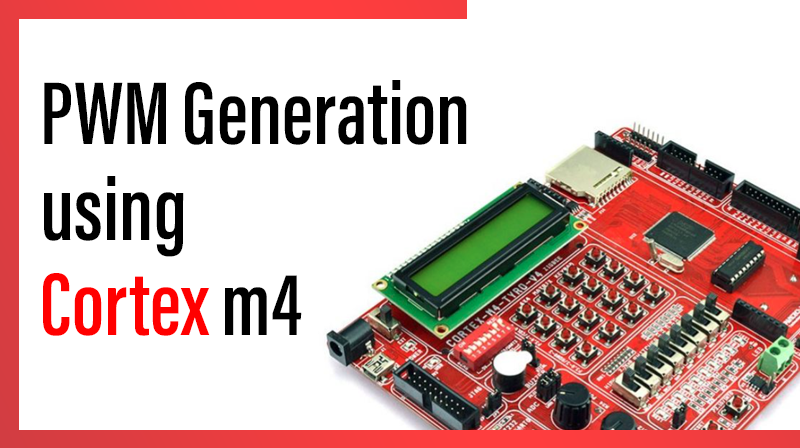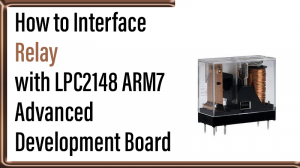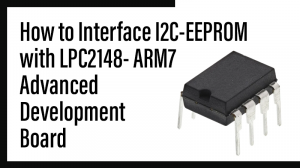
PWM Generation using Cortex m4
This blog post describes how to generate a PWM with variable duty cycle.the processor we used is NXP LPC 4088 .
Steps for PWM Generation using Cortex M4
- Power: In the PCONP register, set bit PCPWM1
- Configure pins P2.0 to P2.5 for PWM using IOCON_P2_0 to IOCON_P2_5.
- Select the single edge mode of PWM
- Select the clock source and clock value for PWM (peripheral clock).
- Set match value for PWM match channel 0 (Frequency of PWM ie period)
- Select and update the duty cycle for each channel (Match registers)
- Enable PWM Channel Output
- Reset the counter to zero
PWM Generation using Cortex m4- C source code
#include "LPC407x_8x_177x_8x.h"
#define PWMPRESCALE 30 //30 PCLK cycles to increment TC by 1 i.e 1 Micro-second
void init_pwm(void);
void delay_ms(long ms) ;
int main(void)
{
init_pwm();
while(1);
}
void init_pwm(void)
{
//1. set bit PCPWM1
LPC_SC->PCONP |= (1 << 6); /* enable power to PWM1*/
//2. Configure Pins P2.0 to P2.5 for PWM using IOCON_P2_0 to P2_5
LPC_IOCON->P2_0 = 1; /* Pin P2.0 to P2.6 used as PWM */
LPC_IOCON->P2_1 = 1;
LPC_IOCON->P2_2 = 1;
LPC_IOCON->P2_3 = 1;
LPC_IOCON->P2_4 = 1;
LPC_IOCON->P2_5 = 1;
LPC_PWM1->PCR = 0x0; // Step-3. Select Single Edge PWM - by default its single Edged so this line can be removed
LPC_PWM1->PR = PWMPRESCALE-1; // Step-4. 1us resolution (30MHz/30)=1MHz
LPC_PWM1->MR0 = 10000; // Step-5. 10ms=10000us period duration ie 100Hz
//6.Select the duty cycle for each channel
LPC_PWM1->MR1 = 9500; // 9.5ms - pulse duration i.e Duty=95%
LPC_PWM1->MR2 = 8000; // 8.0ms - pulse duration
LPC_PWM1->MR3 = 6000; // 6.0ms - pulse duration
LPC_PWM1->MR4 = 3000; // 3.0ms - pulse duration
LPC_PWM1->MR5 = 1500; // 1.5ms - pulse duration
LPC_PWM1->MR6 = 500; // 0.5ms - pulse duration i.e Duty=5%
LPC_PWM1->LER = 0x7F; // Update Period and Duty cycle
//7.Enable PWM Channel Output
LPC_PWM1->PCR = (0x3F<<9); // enable PWM1 to PWM6 output
LPC_PWM1->TCR = (1<<0) | (1<<3); // enable counters and PWM Mode
//8.Reset the Counter
LPC_PWM1->TCR = (1<<1) ; // Reset PWM TC & PR
}
void delay_ms(long ms) // delay 1 ms per count @ CCLK 120 MHz
{
long i,j;
for (i = 0; i < ms; i++ )
for (j = 0; j < 26659; j++ );
}




void delay_ms(long ms)
{
long i,j;
for (i = 0; i < ms; i++ )
for (j = 0; j < 26659; j++ );
}
from the above code why we use 26659?